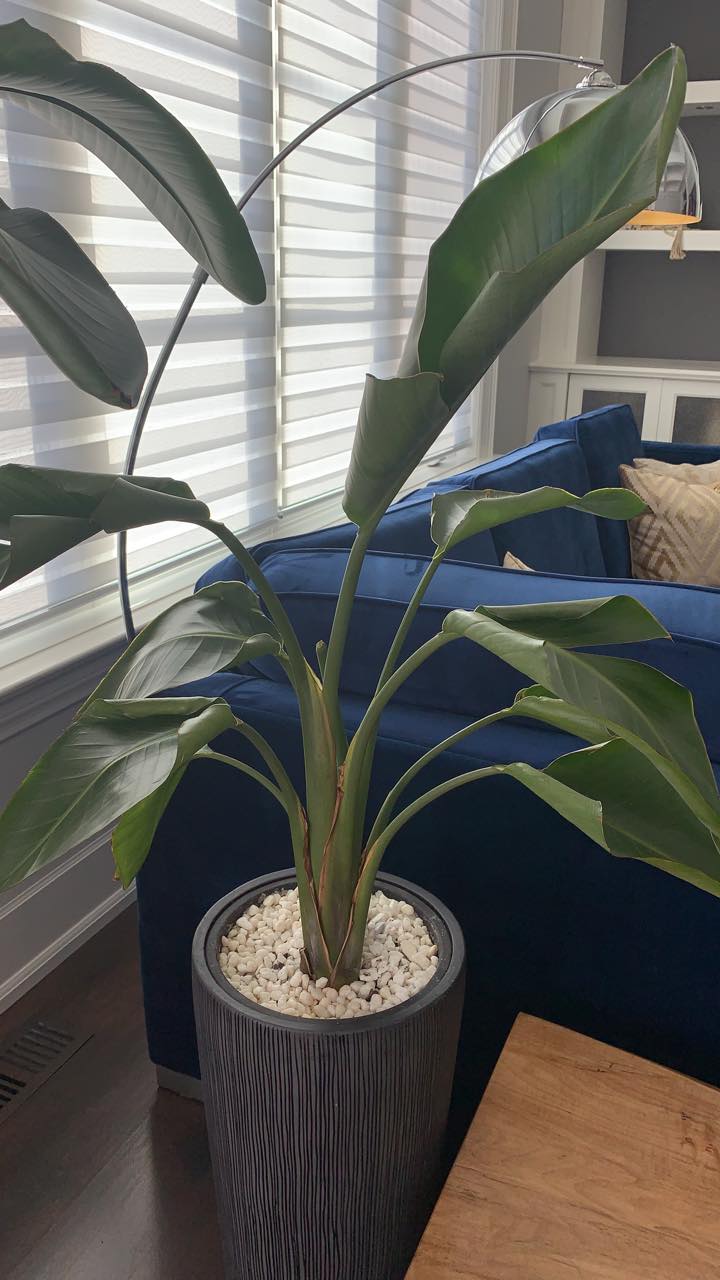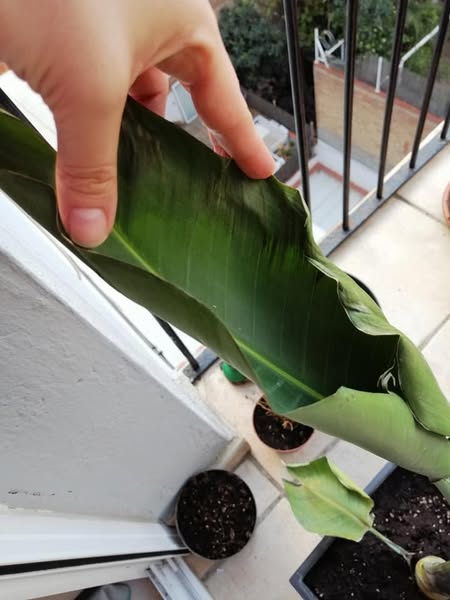
The Bird of Paradise (Strelitzia) is a stunning tropical plant admired for its large, glossy leaves and exotic blooms. However, if you notice its leaves curling, you might be wondering: What’s going wrong? While this can be alarming, don’t worry! Leaf curling is a common issue that can be remedied with proper care and attention.
Leaf curling can result from several factors, including improper watering, low humidity, excessive sunlight, nutrient deficiencies, pest infestations, and temperature stress. Understanding the underlying cause is the first step to nursing your plant back to health. This guide will explore the most common reasons for leaf curling, how to diagnose the problem, and actionable solutions to help your Bird of Paradise flourish.
I’ve provided detailed information in the article below to help with your concerns, However, if you still have questions or need more help, feel free to share photos of your plants or describe your issue on our Facebook Group. Just join the group and leave a comment on the most recent post — either I or someone from the community will respond as soon as possible. We also share helpful and unique plant care tips daily, so consider joining the group to stay updated!
Why Are My Bird of Paradise Leaves Curling?

There are several reasons why the leaves of your Bird of Paradise plant may be curling. Identifying the root cause is crucial for finding the right solution. Below are the primary reasons for this issue, along with their signs and remedies.
1. Underwatering
One of the most common reasons for leaf curling is lack of water. When your plant doesn’t receive enough moisture, its leaves will curl inward to conserve water. The Bird of Paradise is a tropical plant, meaning it thrives in consistently moist (but not soggy) soil. If it goes too long without water, its foliage will begin to dry and curl.
Signs of Underwatering:
- Dry, brittle leaf edges that easily break apart
- Soil that feels completely dry several inches down
- Leaves curling inward or drooping
- Slow growth or stunted new leaf formation
How to Fix It:
- Water your plant deeply when the top 2 inches of soil feel dry. Stick your finger into the soil to check moisture levels before watering.
- Use room-temperature water to avoid shocking the plant’s roots.
- Ensure water reaches the roots and drains properly; soaking the top layer alone is not enough.
- Maintain a consistent watering schedule, adjusting based on seasonal changes and indoor humidity levels. Water more frequently in summer and reduce watering in winter.
2. Overwatering
While too little water is a problem, too much water can also lead to curled leaves. Overwatering can suffocate the roots, leading to root rot and preventing the plant from absorbing nutrients properly. The roots become weak and unable to supply the necessary hydration to the leaves, causing them to curl and wilt.
Signs of Overwatering:
- Leaves curling along with yellowing or browning
- Soil that remains constantly wet or soggy
- Mushy, black, or foul-smelling roots (a sign of root rot)
- Mold or fungus growing on the surface of the soil
How to Fix It:
- Reduce watering frequency; let the soil dry out slightly between waterings.
- If you suspect root rot, remove the plant from its pot, trim any affected roots, and repot it in fresh, well-draining soil.
- Ensure the pot has drainage holes to prevent excess water from accumulating.
- Use a potting mix that includes perlite or sand to improve aeration and drainage.
3. Low Humidity Levels
Birds of Paradise are native to tropical environments with high humidity. If your home has dry air, especially during winter when indoor heating is used, the leaves might curl as a reaction. This is because dry air causes moisture to evaporate from the leaves faster than the roots can replace it.
Signs of Low Humidity:
- Crispy, brown leaf edges or tips
- Leaves curling inwards or looking wrinkled
- Slower growth and lack of new leaves
How to Fix It:
- Use a humidifier to maintain indoor humidity levels between 50-70%.
- Group plants together to create a microclimate with increased humidity.
- Mist the leaves occasionally to provide a temporary moisture boost, but avoid excessive misting as it can lead to fungal issues.
- Place a tray of water and pebbles near the plant to naturally increase humidity.
4. Too Much Direct Sunlight
While Bird of Paradise loves bright light, excessive direct sunlight can cause its leaves to curl due to moisture loss and heat stress. Intense sun exposure can lead to scorched or sunburnt leaves, which can make the plant more vulnerable to dehydration.
Signs of Excessive Sun Exposure:
- Scorched, brown patches on leaves
- Dry, crispy leaf edges
- Leaves curling upwards rather than inwards
- Fading or discoloration of leaves
How to Fix It:
- Move your plant to a spot with bright, indirect light, such as near a north or east-facing window.
- Use sheer curtains to filter intense sunlight if placing it near a south or west-facing window.
- If growing outdoors, provide partial shade during peak sun hours to prevent leaf damage.
5. Nutrient Deficiency
A lack of essential nutrients, particularly nitrogen, magnesium, or potassium, can cause curling and other leaf deformities. Nutrient deficiencies weaken the plant, making it more susceptible to environmental stressors and pests.
Signs of Nutrient Deficiency:
- Yellowing between leaf veins (chlorosis)
- Slow or stunted growth
- Curling, brittle, or deformed leaves
- Weak, thin stems
How to Fix It:
- Use a balanced liquid fertilizer every 4-6 weeks during the growing season (spring and summer).
- Choose a fertilizer with micronutrients like magnesium and iron to promote strong, healthy leaves.
- Avoid over-fertilizing, as excess salts can damage the roots and lead to further curling.
6. Pest Infestation
Pests such as spider mites, aphids, and thrips suck the sap from your Bird of Paradise, causing stress and curled leaves. Infestations weaken the plant and can spread quickly if not addressed.
Signs of Pest Infestation:
- Tiny webs, black spots, or specks under the leaves
- Sticky residue on the plant (a sign of aphids)
- Small insects visible crawling on stems and leaves
- Leaves curling, distorting, or turning yellow
How to Fix It:
- Wipe the leaves with a damp cloth to remove pests.
- Spray the plant with insecticidal soap or neem oil every few days until the infestation clears.
- Keep your plant healthy and well-hydrated to make it less attractive to pests
7. Temperature Stress
Bird of Paradise plants thrive in warm temperatures. If exposed to cold drafts, sudden temperature changes, or extreme heat, they might react by curling their leaves as a defense mechanism.
Signs of Temperature Stress:
- Sudden leaf curling after temperature shifts
- Browning edges or black spots on leaves
- Wilting leaves, especially near air vents or windows
How to Fix It:
- Keep the plant in a temperature range of 65-85°F (18-29°C).
- Avoid placing it near air conditioners, heaters, or drafty windows.
- If your climate is too cold, bring the plant indoors during winter to protect it from frost damage.
